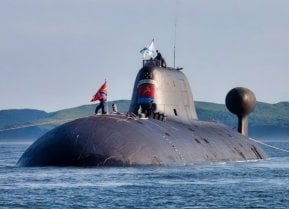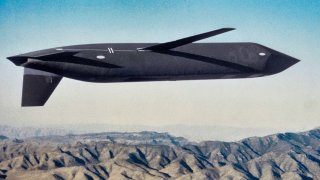AGM-129A: The U.S. Air Force Has Stealth Cruise Missiles
The AGM-129A was a pioneering air-to-ground stealth cruise missile developed by the U.S. Air Force to penetrate sophisticated Soviet air defenses during the Cold War.
Summary: The AGM-129A was a pioneering air-to-ground stealth cruise missile developed by the U.S. Air Force to penetrate sophisticated Soviet air defenses during the Cold War.
-Manufactured by Raytheon Missile Systems, the missile combined stealth technology with the capability to carry nuclear or conventional warheads, marking a significant advancement in military munitions. Launched from a B-52H Stratofortress, it featured a Williams International turbofan engine, enabling speeds up to Mach 3, and utilized advanced navigation systems for precision targeting.
-Despite its innovative design and capabilities, the end of the Cold War and shifting defense priorities led to the discontinuation of the AGM-129A program in 2008, with the Global War on Terror de-emphasizing the need for such specialized armaments.
The Rise and Fall of the AGM-129A: America's Stealth Cruise Missile
As technology advances, stealth aircraft are becoming more prevalent. The U.S. military alone has three in service: the F-22 Raptor and F-35 Lightning II fighter jets and the B-2 Spirit strategic bomber. U.S. adversaries and allies are developing their own stealth aircraft to catch up in this undeclared race.
But it’s not only planes that can go stealthy. There are stealth missiles, too.
The AGM-129A: Stealth and Nukes Combined
The AGM-129A was an air-to-ground stealth cruise missile capable of carrying a nuclear or conventional warhead.
Its story began in 1982 when the U.S. Air Force determined that Soviet air defenses were becoming more capable against its aging AGM-86B munitions. A year later, General Dynamics won a contract to develop what would become the AGM-129A. The first munition flew in 1985, and the Air Force started receiving operational weapons in the early 1990s.
Designed and manufactured by Raytheon Missile Systems, the AGM-129A weighed over 3,500 pounds and was almost twenty-one feet long. Powered by a Williams International Corp. F112-WR-100 turbofan engine that could produce more than 700 pounds of thrust, the AGM-129A could reach speeds of over 2,000 miles per hour—close to Mach 3.
For guidance, the advanced munition relied on inertial navigation with terrain contour matching and laser Doppler velocimeter updates. The cruise missile had small wings that would deploy soon after the munition was released from a bomber. (The AGM-129A was designed to be used exclusively by the B-52H Stratofortress).
The initial plan was for more than 1,500 munitions, but production closed with the end of the Cold War. In 2008, the Pentagon decided to cancel the program. The Global War on Terror didn’t require nuclear-capable stealth missiles, and no near-peer military threat was apparent.
Stealth? What Is It?
A word about stealth capabilities: Stealth doesn’t make an aircraft invisible to the naked eye. An F-35 Lightning II stealth fighter jet is every bit as visible as an F-16 Fighting Falcon fourth-generation fighter jet. What stealth does is make an aircraft, or in this case, a missile, hard to detect for enemy sensors. The better the stealth capabilities of the device, the slower an adversary radar will pick it up, thus buying precious time.
The AGM-129A was the first missile to incorporate stealth design elements such as angular surfaces, radar-absorbent materials, and special jet intakes and exhausts.
About the Author
Stavros Atlamazoglou is a seasoned defense journalist specializing in special operations and a Hellenic Army veteran (national service with the 575th Marine Battalion and Army HQ). He holds a BA from Johns Hopkins University and an MA from the Johns Hopkins School of Advanced International Studies (SAIS). His work has been featured in Business Insider, Sandboxx, and SOFREP.
Image: Creative Commons.


